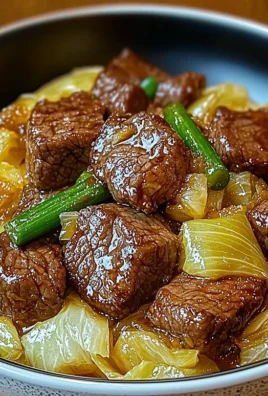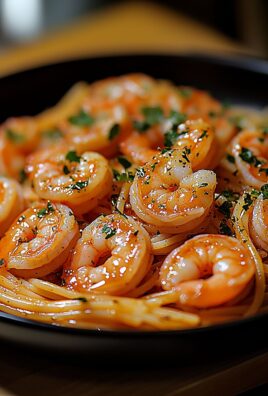Italian Sausage, oh, where do I even begin? Imagine sinking your teeth into a juicy, perfectly seasoned sausage, bursting with savory flavors that transport you straight to a sun-drenched trattoria in Italy. That’s precisely the experience I want to share with you today!
For generations, Italian Sausage has been a cornerstone of Italian-American cuisine, evolving from traditional recipes brought over by immigrants seeking a taste of home. It’s more than just a sausage; it’s a symbol of family gatherings, hearty meals, and the simple pleasures of life. From sizzling on the grill at summer barbecues to simmering in rich tomato sauce for Sunday dinners, this versatile ingredient has earned its place in our hearts (and stomachs!).
What makes Italian sausage so irresistible? It’s the perfect balance of flavors the savory pork, the aromatic fennel seeds, the subtle heat from red pepper flakes, all working in harmony to create a truly unforgettable taste. People love it for its versatility, too. You can grill it, bake it, slice it into pasta dishes, or even crumble it on pizza. Plus, it’s incredibly convenient! Whether you’re a seasoned chef or a beginner cook, Italian sausage is a fantastic way to add a burst of flavor to any meal. So, let’s get cooking and discover the magic of this beloved ingredient together!
Ingredients:
- 1 pound Italian sausage (sweet or hot, your preference!), casings removed
- 1 large yellow onion, chopped
- 2 cloves garlic, minced
- 1 red bell pepper, chopped
- 1 green bell pepper, chopped
- 1 (28 ounce) can crushed tomatoes
- 1 (15 ounce) can tomato sauce
- 1 (6 ounce) can tomato paste
- 1 teaspoon dried oregano
- 1 teaspoon dried basil
- 1/2 teaspoon dried thyme
- 1/4 teaspoon red pepper flakes (optional, for extra heat)
- 1/4 cup chopped fresh parsley
- 1/4 cup grated Parmesan cheese, plus more for serving
- 2 tablespoons olive oil
- Salt and freshly ground black pepper to taste
- 1 pound pasta of your choice (spaghetti, penne, rigatoni all work well)
- Water for boiling pasta
Preparing the Sausage and Vegetables:
- Get started by browning the sausage. In a large, heavy-bottomed pot or Dutch oven, heat the olive oil over medium-high heat. Add the Italian sausage and cook, breaking it up with a spoon, until it’s browned and cooked through. This usually takes about 7-10 minutes. Make sure to crumble the sausage well as it cooks; you don’t want large chunks.
- Remove the sausage from the pot. Once the sausage is browned, use a slotted spoon to remove it from the pot and set it aside in a bowl. Leave any rendered fat in the pot this will add flavor to the vegetables.
- Sauté the onions and peppers. Add the chopped onion to the pot and cook, stirring occasionally, until it’s softened and translucent, about 5-7 minutes. Don’t rush this step; allowing the onions to soften properly will develop their sweetness and flavor.
- Add the garlic and bell peppers. Add the minced garlic, chopped red bell pepper, and chopped green bell pepper to the pot. Cook, stirring frequently, until the peppers are slightly softened, about 3-5 minutes. Be careful not to burn the garlic; it should be fragrant but not browned.
Simmering the Sauce:
- Return the sausage to the pot. Add the browned Italian sausage back to the pot with the vegetables. Stir to combine everything.
- Add the tomato products. Pour in the crushed tomatoes, tomato sauce, and tomato paste. Stir well to incorporate all the ingredients.
- Season the sauce. Add the dried oregano, dried basil, dried thyme, and red pepper flakes (if using). Season with salt and freshly ground black pepper to taste. Remember, you can always add more seasoning later, but it’s harder to take it away, so start with a moderate amount.
- Simmer the sauce. Bring the sauce to a simmer, then reduce the heat to low, cover the pot, and let it simmer for at least 1 hour, or up to 3 hours. The longer the sauce simmers, the more the flavors will meld together and deepen. Stir occasionally to prevent sticking. If the sauce becomes too thick, you can add a little water or broth to thin it out.
Why simmer for so long? Simmering allows the flavors to meld together beautifully. The tomatoes break down, the herbs infuse the sauce, and the sausage imparts its savory goodness throughout. It’s a game-changer! - Add parsley and Parmesan. In the last 15 minutes of simmering, stir in the chopped fresh parsley and grated Parmesan cheese. This adds a fresh, bright note to the sauce and a touch of richness.
Cooking the Pasta:
- Cook the pasta according to package directions. While the sauce is simmering, bring a large pot of salted water to a rolling boil. Add the pasta and cook until al dente, which means it should be firm to the bite. Don’t overcook the pasta; it should have a slight resistance when you bite into it.
- Reserve pasta water. Before draining the pasta, reserve about 1 cup of the pasta water. This starchy water can be used to thin the sauce and help it cling to the pasta.
- Drain the pasta. Drain the pasta in a colander.
Combining and Serving:
- Combine the pasta and sauce. Add the drained pasta to the pot with the sauce. Toss to coat the pasta evenly with the sauce. If the sauce is too thick, add a little of the reserved pasta water until it reaches your desired consistency.
- Serve immediately. Serve the pasta immediately, garnished with extra grated Parmesan cheese and a sprinkle of fresh parsley, if desired. A side of crusty bread is also a great addition for soaking up any extra sauce.
Tips for the Best Italian Sausage Pasta Sauce:
- Use high-quality ingredients. The better the quality of your ingredients, the better the flavor of your sauce. Use good quality Italian sausage, canned tomatoes, and Parmesan cheese.
- Don’t skip the simmering time. Simmering the sauce for at least an hour is crucial for developing the flavors. The longer it simmers, the better it will taste.
- Taste and adjust seasoning. Taste the sauce throughout the cooking process and adjust the seasoning as needed. Add more salt, pepper, or herbs to your liking.
- Add a splash of red wine. For an even richer flavor, add a splash of dry red wine to the sauce after sautéing the vegetables. Let the wine reduce slightly before adding the tomatoes.
- Make it ahead of time. This sauce can be made ahead of time and stored in the refrigerator for up to 3 days or in the freezer for up to 3 months. This is a great option if you’re short on time during the week.
- Spice it up! If you like a spicier sauce, add more red pepper flakes or a pinch of cayenne pepper. You can also use hot Italian sausage instead of sweet.
- Add other vegetables. Feel free to add other vegetables to the sauce, such as mushrooms, zucchini, or carrots. Just add them to the pot along with the onions and peppers.
- Use different types of pasta. While spaghetti, penne, and rigatoni are all great choices, you can use any type of pasta you like. Bowtie pasta, shells, or even orzo would work well.
- Don’t forget the bread! Crusty bread is a must for soaking up all that delicious sauce. Serve it warm with a drizzle of olive oil and a sprinkle of herbs.
Variations:
- Creamy Italian Sausage Pasta: Stir in 1/2 cup of heavy cream or mascarpone cheese at the end of cooking for a richer, creamier sauce.
- Italian Sausage and Spinach Pasta: Add a few handfuls of fresh spinach to the sauce in the last few minutes of cooking.
- Baked Italian Sausage Pasta: Combine the cooked pasta and sauce in a baking dish, top with mozzarella cheese, and bake until the cheese is melted and bubbly.
- Vegetarian Italian Sausage Pasta: Use plant-based Italian sausage crumbles for a vegetarian version of this dish.
Serving Suggestions:
- Serve with a side salad and garlic bread for a complete meal.
- Pair with a glass of red wine, such as Chianti or Cabernet Sauvignon.
- Garnish with fresh basil leaves for a pop of color and flavor.
- Serve as a main course for a casual dinner party or family gathering.
This Italian sausage pasta sauce is a classic comfort food that’s sure to please everyone. Enjoy!

Conclusion:
This isn’t just another recipe; it’s an invitation to experience the robust, comforting flavors of perfectly cooked Italian Sausage. From the satisfying snap of the casing to the juicy, savory filling, every bite is a testament to simple ingredients transformed into something truly special. I genuinely believe this method unlocks the full potential of Italian sausage, delivering a consistently delicious result that will impress your family and friends.
Why is this a must-try? Because it’s foolproof! Whether you’re a seasoned chef or a kitchen novice, the straightforward instructions and readily available ingredients make this recipe accessible to everyone. Forget about dry, bland sausage this method guarantees a juicy, flavorful outcome every single time. Plus, the versatility of this cooked sausage opens up a world of culinary possibilities.
Think beyond just serving it as is! For a classic Italian feast, slice the sausage and toss it with your favorite pasta sauce and al dente pasta. A sprinkle of Parmesan cheese and fresh basil completes the picture. Or, create a hearty sausage and pepper sandwich on crusty Italian bread, piled high with sautéed bell peppers and onions. For a lighter option, crumble the cooked sausage and add it to a frittata or omelet for a protein-packed breakfast or brunch.
And the variations are endless! Experiment with different types of Italian sausage sweet, hot, or even a blend. Add a splash of red wine to the pan during cooking for an extra layer of flavor. Or, incorporate some chopped fennel or sun-dried tomatoes into the sausage mixture before cooking for a unique twist. You can even use this method to cook other types of sausage, like bratwurst or chorizo, adapting the cooking time as needed.
Serving Suggestions:
* Pasta Perfection: Slice and toss with marinara or pesto.
* Sandwich Supreme: Build a sausage and pepper hero on crusty bread.
* Breakfast Boost: Crumble into frittatas or omelets.
* Pizza Power: Add as a topping to your homemade pizza.
* Soup Star: Slice and add to minestrone or lentil soup.
I’m so confident that you’ll love this recipe that I urge you to give it a try. Don’t be intimidated by the thought of cooking sausage this method takes the guesswork out of it and delivers consistently delicious results. The key is to be patient and allow the sausage to cook slowly and evenly, developing a beautiful golden-brown crust and a juicy, flavorful interior.
Once you’ve tried it, I’d absolutely love to hear about your experience! Did you make any variations? What did you serve it with? Share your photos and comments in the section below I’m always eager to learn from your culinary adventures. Your feedback helps me refine and improve my recipes, and it also inspires other readers to try them out. So, go ahead, fire up the stove, and get ready to enjoy the best Italian Sausage you’ve ever tasted! Happy cooking!
Italian Sausage: The Ultimate Guide to Cooking, Recipes, and More
Hearty Italian sausage pasta sauce simmered with sweet peppers, herbs, and Parmesan. Serve over pasta for a comforting meal.
Ingredients
- 1 pound Italian sausage (sweet or hot, your preference!), casings removed
- 2 tablespoons olive oil
- 1 large yellow onion, chopped
- 2 cloves garlic, minced
- 1 red bell pepper, chopped
- 1 green bell pepper, chopped
- 1 (28 ounce) can crushed tomatoes
- 1 (15 ounce) can tomato sauce
- 1 (6 ounce) can tomato paste
- 1 teaspoon dried oregano
- 1 teaspoon dried basil
- 1/2 teaspoon dried thyme
- 1/4 teaspoon red pepper flakes (optional, for extra heat)
- 1/4 cup chopped fresh parsley
- 1/4 cup grated Parmesan cheese, plus more for serving
- Salt and freshly ground black pepper to taste
- 1 pound pasta of your choice (spaghetti, penne, rigatoni all work well)
- Water for boiling pasta
Instructions
- Brown the Sausage: In a large, heavy-bottomed pot or Dutch oven, heat the olive oil over medium-high heat. Add the Italian sausage and cook, breaking it up with a spoon, until browned and cooked through (7-10 minutes). Remove sausage with a slotted spoon and set aside.
- Sauté Vegetables: Add the chopped onion to the pot and cook until softened and translucent (5-7 minutes). Add the minced garlic, chopped red bell pepper, and chopped green bell pepper. Cook, stirring frequently, until the peppers are slightly softened (3-5 minutes).
- Simmer the Sauce: Return the sausage to the pot with the vegetables. Add the crushed tomatoes, tomato sauce, and tomato paste. Stir well. Add the dried oregano, dried basil, dried thyme, and red pepper flakes (if using). Season with salt and pepper to taste.
- Simmer Long and Slow: Bring the sauce to a simmer, then reduce heat to low, cover, and simmer for at least 1 hour, or up to 3 hours, stirring occasionally. If the sauce becomes too thick, add a little water or broth.
- Add Finishing Touches: In the last 15 minutes of simmering, stir in the chopped fresh parsley and grated Parmesan cheese.
- Cook Pasta: While the sauce simmers, bring a large pot of salted water to a rolling boil. Add the pasta and cook until al dente, according to package directions. Reserve about 1 cup of pasta water before draining.
- Combine and Serve: Drain the pasta and add it to the pot with the sauce. Toss to coat. If the sauce is too thick, add a little of the reserved pasta water until it reaches your desired consistency. Serve immediately, garnished with extra grated Parmesan cheese and fresh parsley, if desired.
Notes
- Ingredient Quality: Use high-quality Italian sausage, canned tomatoes, and Parmesan cheese for the best flavor.
- Simmering Time: Don’t skip the simmering time! It’s crucial for developing the flavors.
- Taste and Adjust: Taste the sauce throughout the cooking process and adjust the seasoning as needed.
- Red Wine: Add a splash of dry red wine to the sauce after sautéing the vegetables for an even richer flavor. Let the wine reduce slightly before adding the tomatoes.
- Make Ahead: This sauce can be made ahead of time and stored in the refrigerator for up to 3 days or in the freezer for up to 3 months.
- Spice It Up: Add more red pepper flakes or a pinch of cayenne pepper for a spicier sauce. You can also use hot Italian sausage instead of sweet.
- Add Vegetables: Feel free to add other vegetables to the sauce, such as mushrooms, zucchini, or carrots.
- Pasta Variety: Use any type of pasta you like.
- Bread: Serve with crusty bread for soaking up the delicious sauce.




